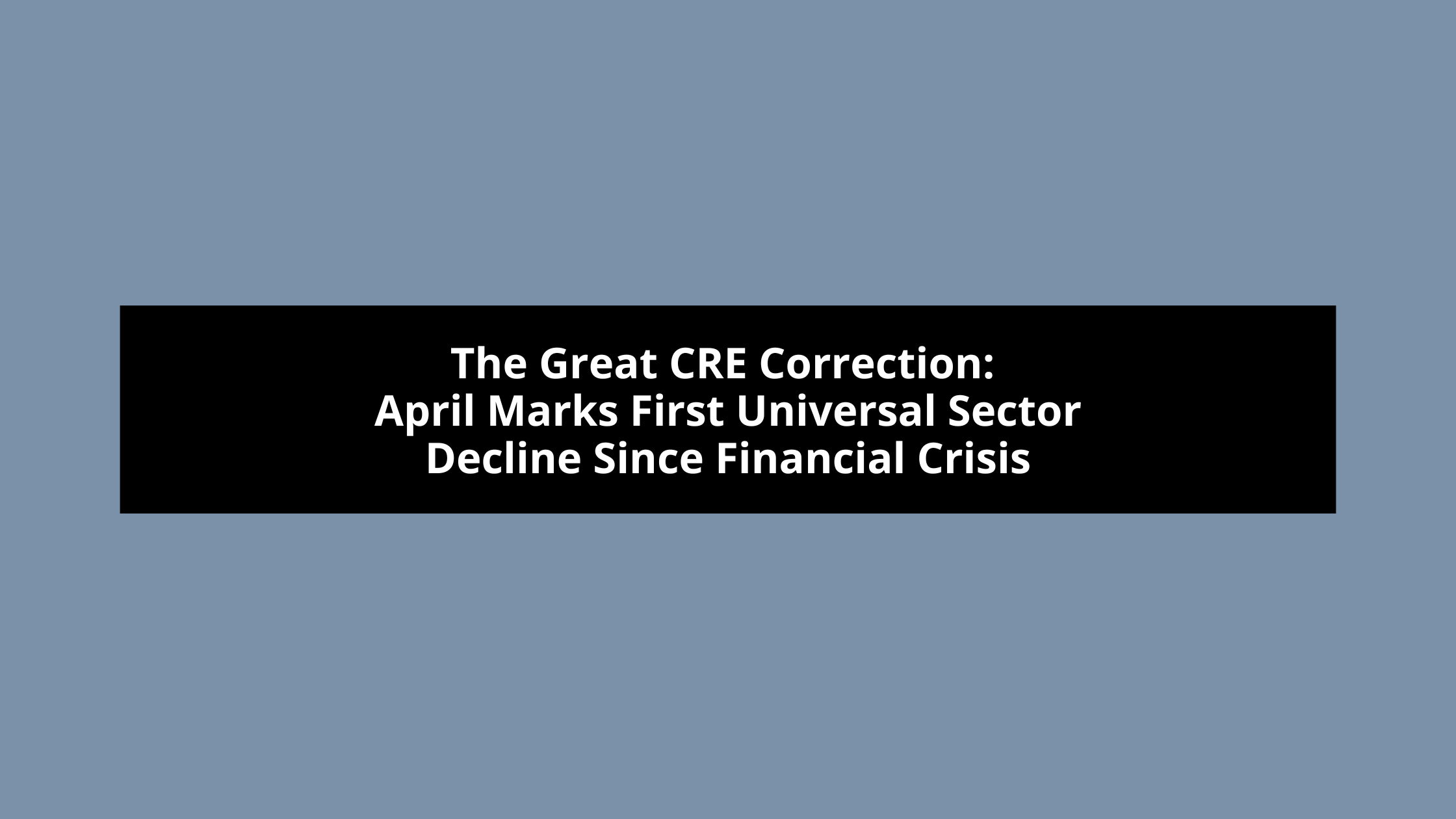Commercial Mortgage Delinquencies Surge in Q1 2025:
The commercial real estate finance landscape showed clear signs of strain in the first quarter of 2025, with mortgage delinquencies climbing across every major lending category. The troubling trend, led by a sharp spike in commercial mortgage-backed securities (CMBS) defaults, underscores the mounting pressure facing property owners and lenders alike in an increasingly challenging market environment.
CMBS Leads the Charge Higher
The most alarming development came from the CMBS sector, where delinquency rates rocketed to 6.42% in Q1 2025—a substantial 64 basis point increase from the previous quarter and the highest rate among all major investor groups. This represents more than five times the delinquency rate seen in traditional bank portfolios, highlighting the acute stress in securitized commercial lending.
The disparity isn’t coincidental. CMBS loans typically finance properties in sectors most vulnerable to current market headwinds—particularly retail and office assets that continue grappling with structural shifts in consumer behavior and workplace patterns. These property types have faced sustained pressure from changing tenant demands and economic uncertainty, making refinancing increasingly difficult as loans mature.
Broad-Based Deterioration
While CMBS grabbed headlines with its dramatic increase, the concerning reality is that delinquencies rose across the board. The Mortgage Bankers Association data revealed increases among all major capital sources:
Banks and thrifts saw their 90+ day delinquency and non-accrual rate edge up 2 basis points to 1.28%. Though modest, this uptick signals that even traditional lenders with historically conservative underwriting standards are beginning to feel market stress.
Life insurance companies, typically the most selective commercial lenders, experienced a 4 basis point increase to 0.47% for loans 60+ days delinquent. While still maintaining the lowest absolute delinquency rate, the increase suggests that even premium borrowers are facing challenges.
The government-sponsored enterprises also posted increases, with Fannie Mae’s 60+ day delinquency rate rising 6 basis points to 0.63%, while Freddie Mac’s rate climbed an identical 6 basis points to 0.46%.
Measurement Complexities
Understanding these figures requires acknowledging the nuances in how different lenders categorize problem loans. The variations in delinquency definitions across capital sources make direct comparisons challenging and potentially misleading.
Fannie Mae, for instance, includes forbearance arrangements in its delinquency calculations, viewing any payment modification as a sign of borrower distress. Freddie Mac takes a different approach, excluding forbearance loans from delinquency statistics as long as borrowers comply with their modified payment terms. These definitional differences can create significant variations in reported rates that don’t necessarily reflect actual loan performance.
Similarly, banks measure delinquencies using 90+ day criteria or non-accrual status, while life companies and GSEs typically use 60-day thresholds. These varying timeframes and criteria mean that while the directional trend is clear, the relative severity between lender types requires careful interpretation.
Market Implications
The broad-based increase in delinquencies reflects the fundamental challenges reshaping commercial real estate. Higher interest rates have dramatically increased borrowing costs, while falling property values in key sectors have eroded equity positions. This toxic combination leaves many borrowers trapped—unable to refinance existing debt or sell properties without substantial losses.
The refinancing crisis is particularly acute for loans originated during the ultra-low rate environment of 2020-2022. Properties that penciled with 3% interest rates now face refinancing costs of 6-7% or higher, creating massive payment shocks that many borrowers simply cannot absorb.
Looking Ahead
Current market conditions suggest this trend is likely to continue, if not accelerate, through 2025. The combination of elevated interest rates, selective lending standards, and ongoing structural challenges in office and retail sectors creates a perfect storm for continued delinquency growth.
CMBS lenders face particular vulnerability due to their exposure to distressed property types and limited ability to work with borrowers compared to relationship-based bank lenders. Office properties, in particular, continue facing existential questions about long-term viability as remote work permanently reduces space demand.
The Q1 2025 delinquency data serves as an early warning system for broader market stress. While absolute levels remain manageable for most lender types, the universal upward trajectory suggests that commercial real estate’s adjustment period is far from over. Market participants should prepare for continued volatility as the sector works through this challenging transition.
About MylesTitle: MylesTitle is your solution for commercial real estate title insurance. From the ordinary to the extraordinarily complex, we advocate for owners and lenders to issue the most favorable title policies to benefit you and/or your client in terms of coverage and cost. Contact us to discuss how what we do is different and how we can save you time, energy and money.


